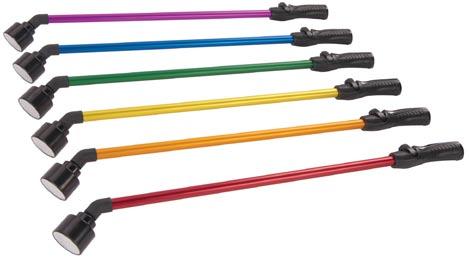GREENliving
Foraging 101:
From the Sidewalk Edges to Your Plate By Hadley Baker
While at lunch one day, Ellen Zachos— author and founder of Backyard Forager (www.backyardforager.com), a website focused on cooking with foraged plants—found a passion and fascination for foraging. “One of the people who worked for me was a forager, and we were sitting around having lunch one day in somebody’s garden and I had nothing but a cheese sandwich,” she recalled. “And she reached over and grabbed a couple of leaves of garlic mustard, which is a very invasive weed but also very delicious, and she put it in my sandwich and said, ‘This is gonna make it much more interesting.’ And that’s really all it took.” From then on, Zachos was bitten by the foraging bug. Already an expert in ornamental plants from her time working at a garden design installation and 6
WASHINGTON GARDENER
JUNE 2020
maintenance company in New York City, she read everything foraging-related she could get her hands on—something she recommends that anyone new to the subject do. She also attended foraging festivals across the country, including the North Carolina Wild Food Weekend. April Thompson describes foraging as a way of “procuring your own food from the wild, be it from the sidewalk or the forest.” Thompson, a marketing director for Blue Drop and a passionate forager, emphasized the litany of benefits that come with foraging on your own, including free food, free medicine, exercise, nutrition, and getting in touch with the ecosystem around you. During the coronavirus pandemic, Thompson emphasized that foraging is even more vital than usual; right now, as people deal with reduced food
sources due to loss of income or more limited availability of food, foraging helps alleviate some of these concerns as a free and easy way to obtain food without taking an unnecessary trip to the grocery store. Before you set out to forage in your neighborhood or local park, there are a few caveats to be aware of. First and foremost, both Thompson and Zachos highlighted the necessity of knowing whether what you’re picking is, in fact, edible before you take a taste. “Number one rule: Never put anything in your mouth unless you’re 100% sure what it is,” Zachos said. She emphasized that this is not a tip, but a rule all foragers must follow—for safety from poisoning as well as for allergies. While you may think something is edible or can’t hurt you, it’s not worth taking the chance. Be sure to do your research before tasting anything on your foraging walks. Thompson suggested starting off by getting to know one or two easily identifiable plants that you know are edible. She named dandelions and milkweed as two potential starter plants. “Dandelions have so many different applications, and every part of the dandelion is edible,” Thompson said, adding that it’s essential to know which parts of a plant are edible and which are not. For example, the fruit of the yew plant is edible, while its leaves and seeds are toxic. Using plant identifier apps is a great way to access information and get a clear understanding of what a plant is, Thompson said. Her favorite app for this is Picture This, which allows you to take photos of plants and will then identify them for you. Although plant identifier apps are useful, Thompson said you still have to do some of your own research, including looking up dangerous look-alikes of a plant. Another factor to consider is the plant’s life cycle. “There are some things like pokeweed that are very delicious and perfectly edible at a young stage, but can become poisonous later in its life cycle,” Thompson said. Beyond making sure a plant is safe to eat, another essential foraging rule is to make sure you have permission to harvest. Some parks in the area allow




